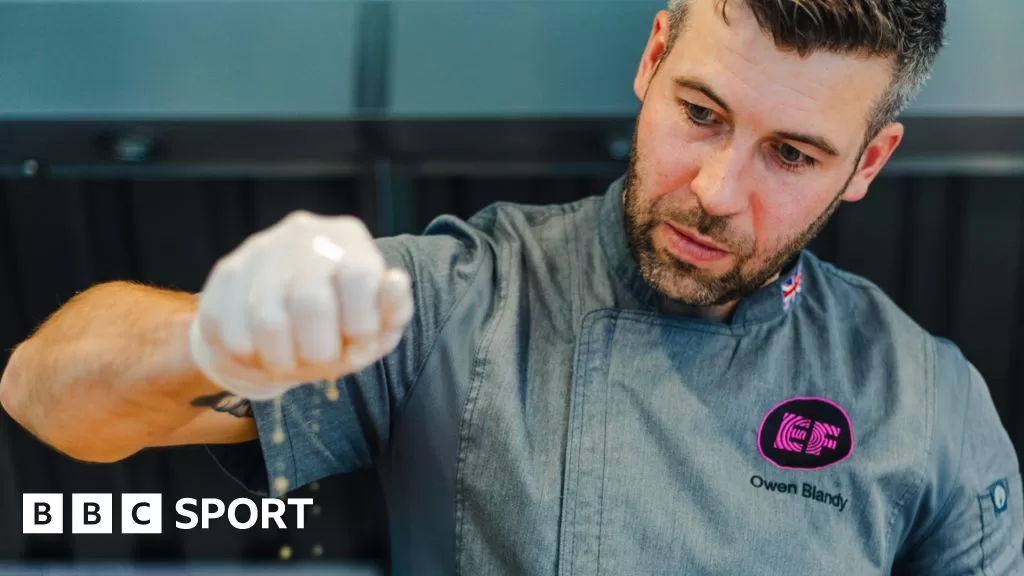Not so long ago, the professional cycling world’s approach to fuelling was remarkably basic.
Options for riders barely extended beyond a monotonous menu of pasta, rice or whatever fare that night’s hotel kitchen decided to serve up.
These days, it is an entirely different prospect, with vast sums spent on custom-built food trucks, personalised nutrition apps and meticulously-planned meal regimes all in the name of performance enhancement.
For the nutritionists and chefs tasked with providing sustenance to power their team’s riders over 2,170 miles in the coming weeks there are principally two dilemmas: what food to prepare and how to do so in an ever-changing environment.
The answers are gleaned from a year-round process that begins in December during pre-season training.
While the riders are honing their bodies, ready for the multitude of races ahead, the number-crunchers eagerly gather data to better understand their nutritional needs.
“We know their individual bodies, their metabolism, how many calories they burn when resting and exactly what they will do in training, the intensity, how long and how many calories they will burn,” says Visma-Lease a Bike head of nutrition Martijn Redegeld.
“Heart rate plays a role. We have that after each training ride. And at certain points in the season we test lactate measurements and breathing measurements in the lab to develop a good profile of each rider.”
As one of three teams – alongside UAE Team Emirates and Ineos Grenadiers – whose budget tends to dwarf all others, Visma-Lease a Bike has strived to place itself at the forefront of nutritional advancement.
Partnerships with universities aim to ensure they are firmly aware of developments within the field “to keep that competitive edge over other teams”, says Redegeld.
With riders burning an average of 6,000 calories per day during the Tour (around three times more than a resting adult), Visma-Lease a Bike have even begun using Artificial Intelligence to help determine precisely how much – and what type of – food each individual cyclist should consume.
Personalisation has become increasingly paramount, with the team developing its own app,, external where various algorithms are used to generate individualised nutrition plans.
When a rider comes back from a day on the bike, they simply open the app and are told exactly how many grams of each nutritional component (carbohydrates, proteins, fats etc) to put on their plate. No brain power is wasted beyond using the ubiquitous buffet table weighing scales.
While the methods used to generate precise nutritional needs vary between teams, all of them work to a broad five-meal daily plan of breakfast, pre-race snack, on-bike fuelling, recovery meal and dinner.
The core feeding principles remain the same across the peloton, although they are tweaked depending on the upcoming day’s requirements and whether the rider in question is a climber or a sprinter, a domestique or a general classification contender.
Carbohydrates – usually in the form of rice or pasta – serve as the petrol, necessitating painfully high consumption levels.
Proteins – predominantly fish or chicken – are always unprocessed and fibre is kept low to minimise gut irritation and aid digestion, with fruit and vegetables often consumed in juice form.
Vegetarians tend to supplement themselves with protein shakes, in addition to plant-based proteins like tofu and seitan.
Riders might be allowed more vegetables and fibrous foods before flatter race days, when the body will be better equipped to break them down, while red meats are saved as a treat the evening before rest days.
On-bike fuelling comes courtesy of roadside soigneurs who load up musette bags with a variety of high-carbohydrate forms that can be selected or discarded based on personal preference.
Energy bars, gels, drinks and gummies provide quick hits on tough days, while more traditional food sources include wet rice cakes, brioches, jam sandwiches, flapjacks, sweet breads and cakes for easier days.
The required quantities are unenviably vast. Each rider consumes close to 1.5kg of rice or pasta every day and in the region of 120g of carbohydrates per hour when on the bike – the equivalent carbohydrate content of five hourly bananas.
One EF rider once went through four tubs of maple syrup during the three-week race.
